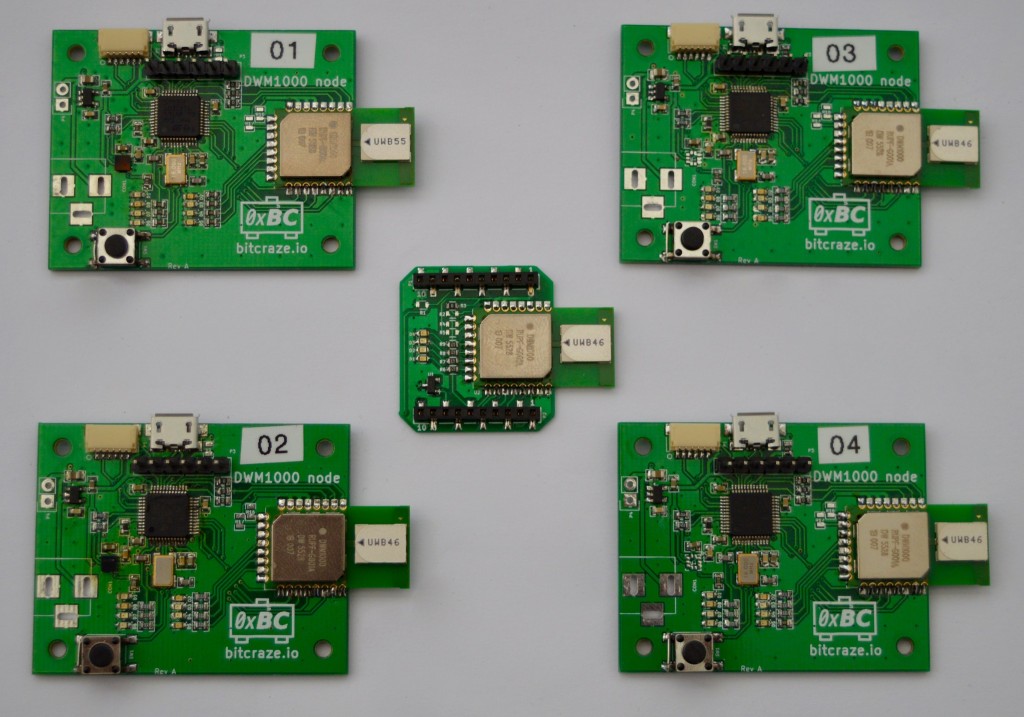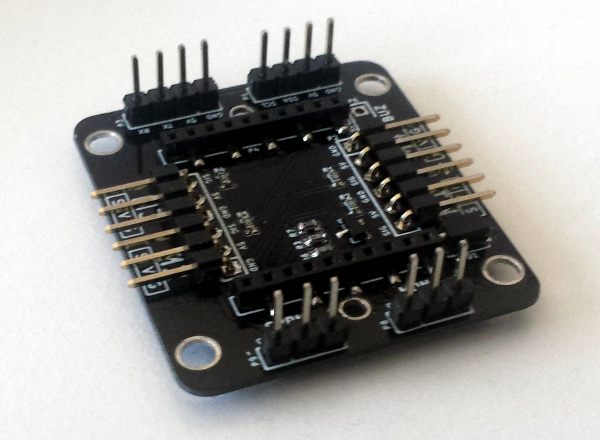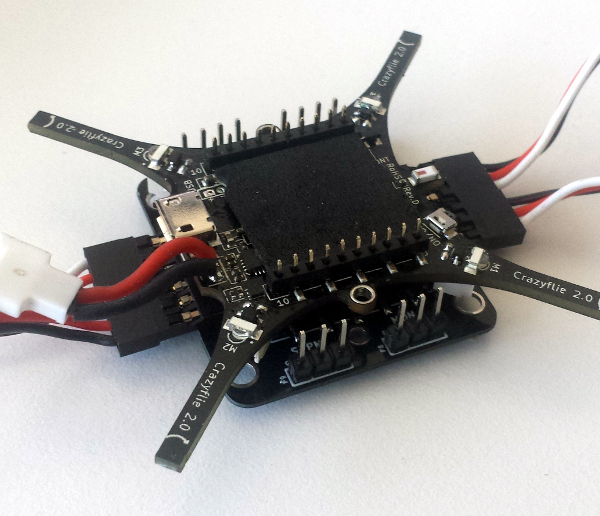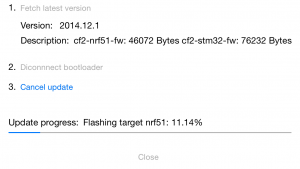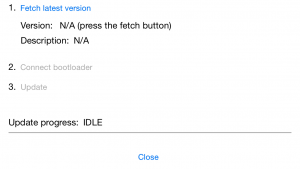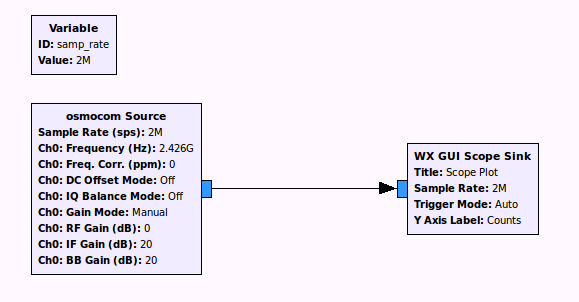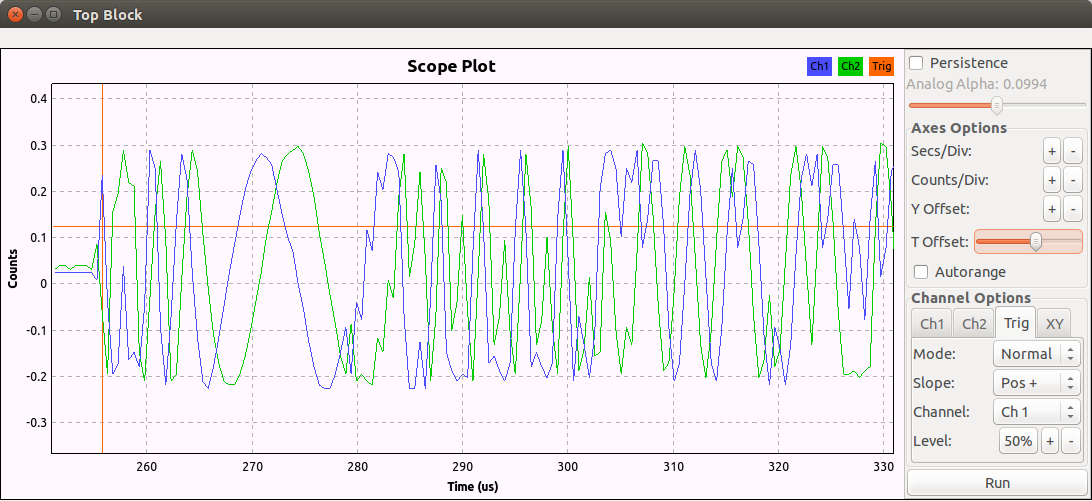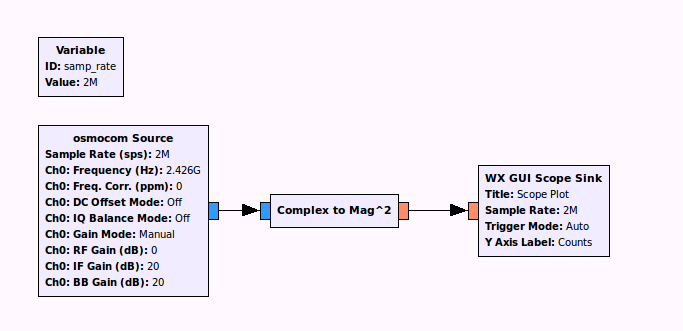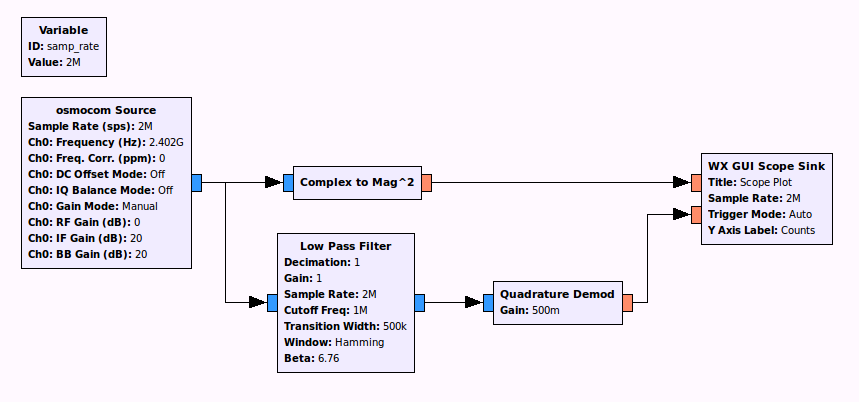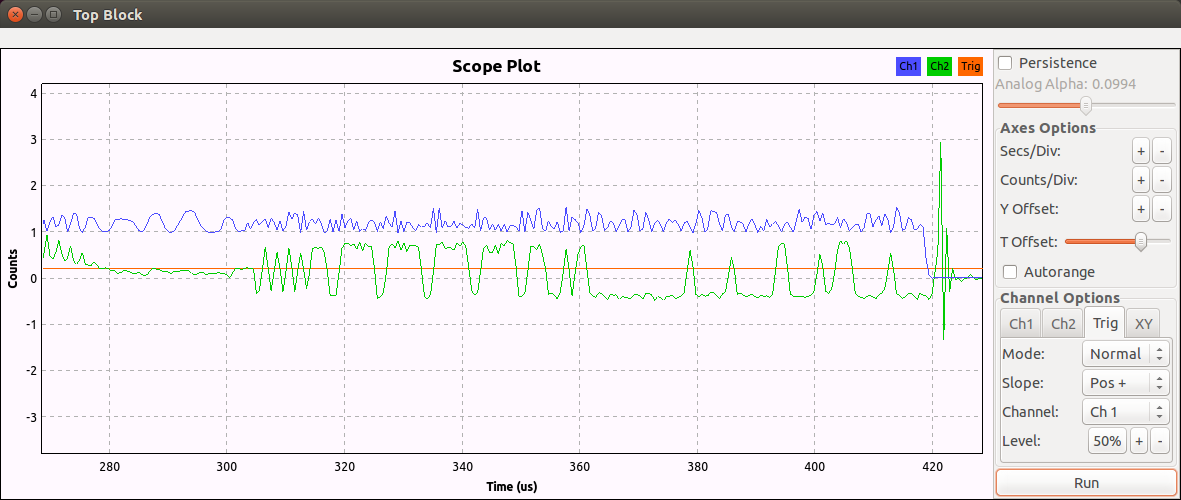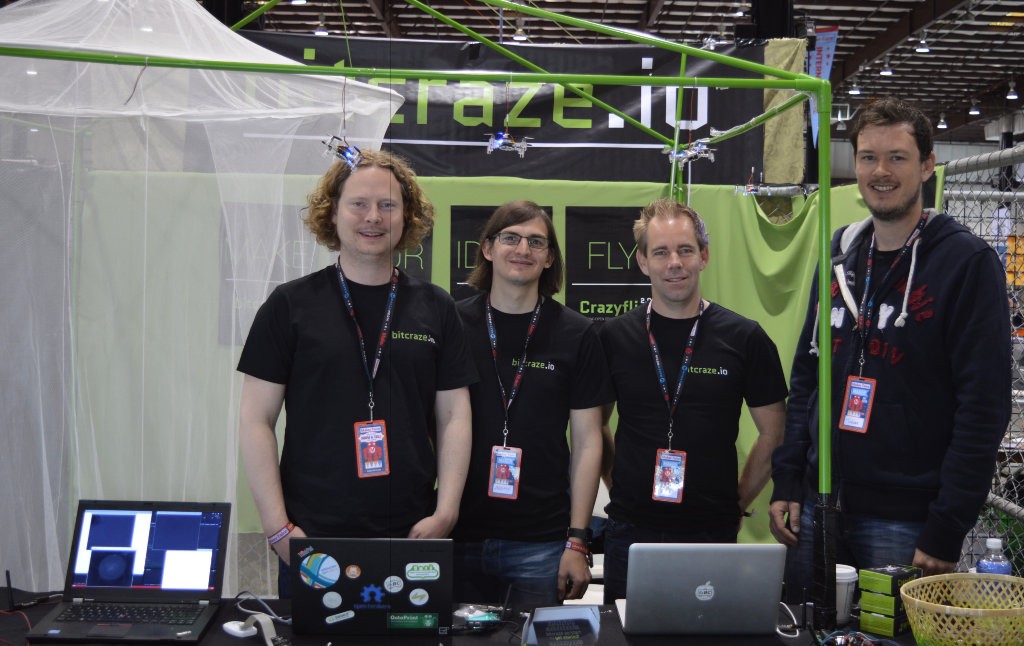Lately we have been busy finalizing new Decks. We have a pretty long list of what we want to release and the first four to come are the bigquad deck, the Buzzer deck, Wifi (ESP8266) deck and a GPS (GlobalTop) deck. Before going further a disclaimer: we have ordered final prototype of these decks so the probability we release them is pretty high, though it is still possible we end up hitting a big bug and then some might be delayed.
The bigquad was covered in previous post. It is a very simple deck: only connectors. It can be used to connect brushless motors ESCs to the Crazyflie in order to control a bigger quad. We have also added connectors to control the Crazyflie from a standard receiver (SPPM input), for GPS, active buzzer, battery telemetry and I2C sensors. The main use case we see for this deck is to be able to develop with the Crazyflie and then go outside and fly with bigger sensors without having to port the code to another platform.
Firmware-wise we are developing support for ESCs and SPPM input.
The Buzzer deck is the second simplest: we have ‘just’ mounted a buzzer on a deck and made the driver for it. As usual with production nothing is easy and selecting the buzzer was surprisingly hard. We wanted a low profile buzzer to be able to put other decks on top of it. We have ordered 20-ish different buzzer from DigiKey and tested all of them to select the best:
The Buzzer driver will be able to play some music as well other sounds. One use case we envision for the buzzer deck is to be able to find the Crazyflie if it has crashed out of sight.
The GPS deck is an old story: we started working on a GPS deck on the Summer 2014 and we even planed to release it at the same time as the Crazyflie 2.0. Unfortunately we had lots of problems with the antenna not working properly when attached to the Crazyflie. After a lot of experimentation, spread over 1 year, we finally endeded up with a design that works: an integrated GPS receiver and patch antenna:
We found the patch antenna to be much less sensitive to the Crazyflie 2.0 ground plane than the previously tested chip-antenna. As for the software part we will implement enough code to decode the NMEA strings from the GPS and makes them available via the log subsystem. We have a prototype of a new GPS tab in the client using a webview and openstreetmap, more on that on a later post.
Finally we have mounted an ESP8266 wifi module on a deck and Crazyflie 2.0 becomes Wifi enabled :-):
So far we are planning on loading the NodeMCU Lua firmware in the ESP8266 which will allow to easily develop wifi connectivity to the Crazyflie. Note that the final board will be based on a different ESP8266 module with chip-antenna.
We will post more in-depth information about those new decks in the following weeks. We will also communicate the release date as soon as we know it.









